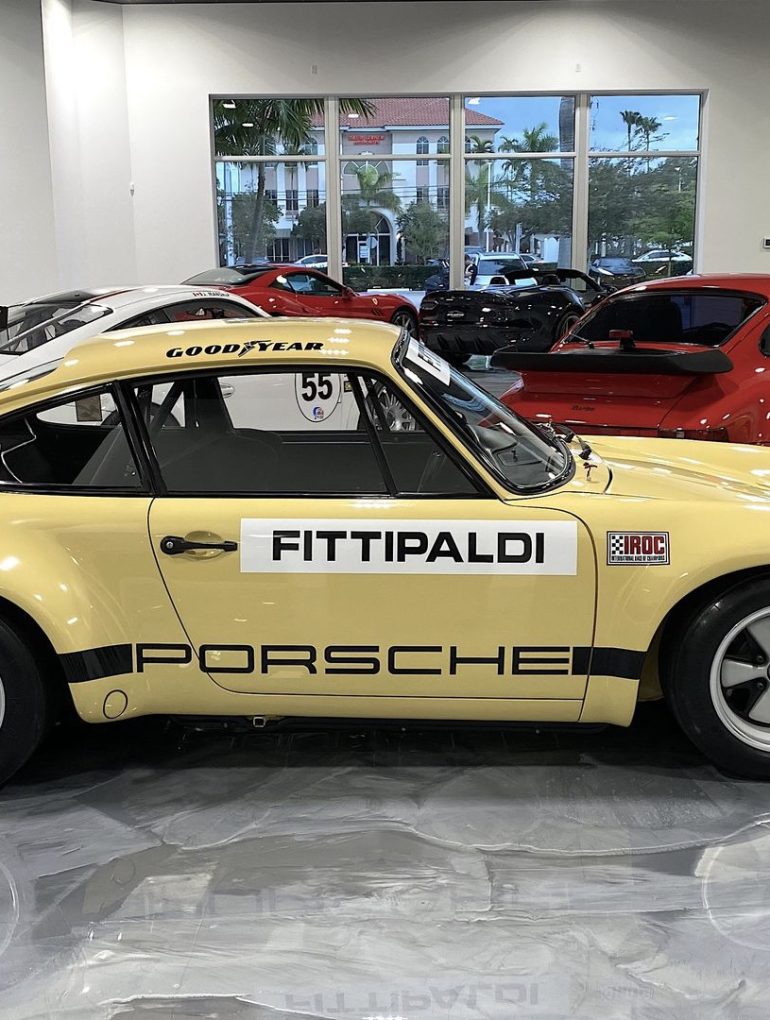The International Race of Champions’ (IROC) RSR are not just extremely rare, they’re also a very interesting model. Porsche only made 15 examples, and they really set it apart from the 1973 RSR as well as the 1974 RSR by taking features from both models so it ended up being on a class of its own.
The IROC used the new 1974 “short hood” body style, but it was matched with a rear deck lid that was just for the model. The five lug Fuchs wheels with the High Butterfly style injection of the 1973 RSR can be seen in the IROC, but they used the 3-liter displacement of the ‘customer’ 1974 RSR that had the Slide Valve Injection and center-lock BBS wheels.
The shared features and distinct changes that Porsche made on the IROC partnered with its rarity of having only 15 units manufactured, easily makes the IROC the rarest early air cooled RSRs.

David Lockton developed the International Race of Champions in 1972. The race would have identically prepared race cars to be driven by champions and top drivers in different racing series, with the thought that the best driver would be the victor.
The first season of the IROC Series had the fifteen identical 1974 Porsche RSR’s with the assistance of Roger Penske. The twelve champions would use the twelve cars to compete for the best of the best title, and three cars would be on reserve.
In October 1973, the first three elimination races were done at the Riverside International Speedway in just one weekend. Using a points system, six drivers would be eliminated after the weekend is over. The final six would once again go up against each other in the final race at Daytona International Speedway on April 4, 1974.

The Sahara Beige car, chassis 911 460 0100, was driven by the very popular Formula One Champion Emerson Fittipaldi. For the first IROC race, he qualified on pole at Riverside.
At only 25, Fittipaldi won the 1972 Formula One Championship, making him the youngest F1 Champion at the time. In 1974, he won another F1 Championship. At age 47, he raced and won at the 1993 Indianapolis 500, making him the oldest driver to win in that race. He had previously won the Indianapolis 500 in 1989. He also had the CART Championship under his belt.
The Sahara Beige IROC RSR will always be dubbed “The Fittipaldi car” despite not being raced for the whole IROC event. Unfortunately, Fittipaldi was penalized for being a few minutes late during the drivers meeting and he had to start at 11th place during the inaugural race. Fittipaldi immediately overcame the hurdle and he moved up the field.
In another unfortunate event, he went off track and also had a fuel leak forcing him to retire.

With three other cars on reserve, the Fittipaldi #1 was never again seen on track for the remainder of the weekend, and neither was it used in Daytona.
Volkswagen of America, Inc. Porsche Audi sold the IROC Porsches to Penske Productions. Since there will only be one final race with the top six drivers competing, Penske knew he did not need 15 cars. Just four days after the Riverside race, on October 31, the IROC was sold to North Lake Porsche Audi. North Lake sold the IROC to T. & C. Racing, Inc. based in Sarasota, Florida. T & C is basically just John Turnstall.

As a privateer, he ran a reduced IMSA schedule which was fairly common then. He took part in a lot of IMSA races like the Sebring 12 Hours which he joined twice. He once raced in the Daytona 24 Hours. His best record was a 23rd overall at the Sebring 12 hours.
In 1974, Charlie Kemp also raced the example recording a top-ten finish at the Mid-Ohio and Lime Rock. It is assumed that the example’s last IMSA race was at the 1978 Daytona 24 Hours.
The infamous drug kingpin Pablo Escobar is one of its previous owners who also tried to race the example.
It has been kept in storage for quite some time because it was given a restoration to bring it back to its IROC Fittipaldi livery. The Fittipaldi car has a well-documented unbroken history




